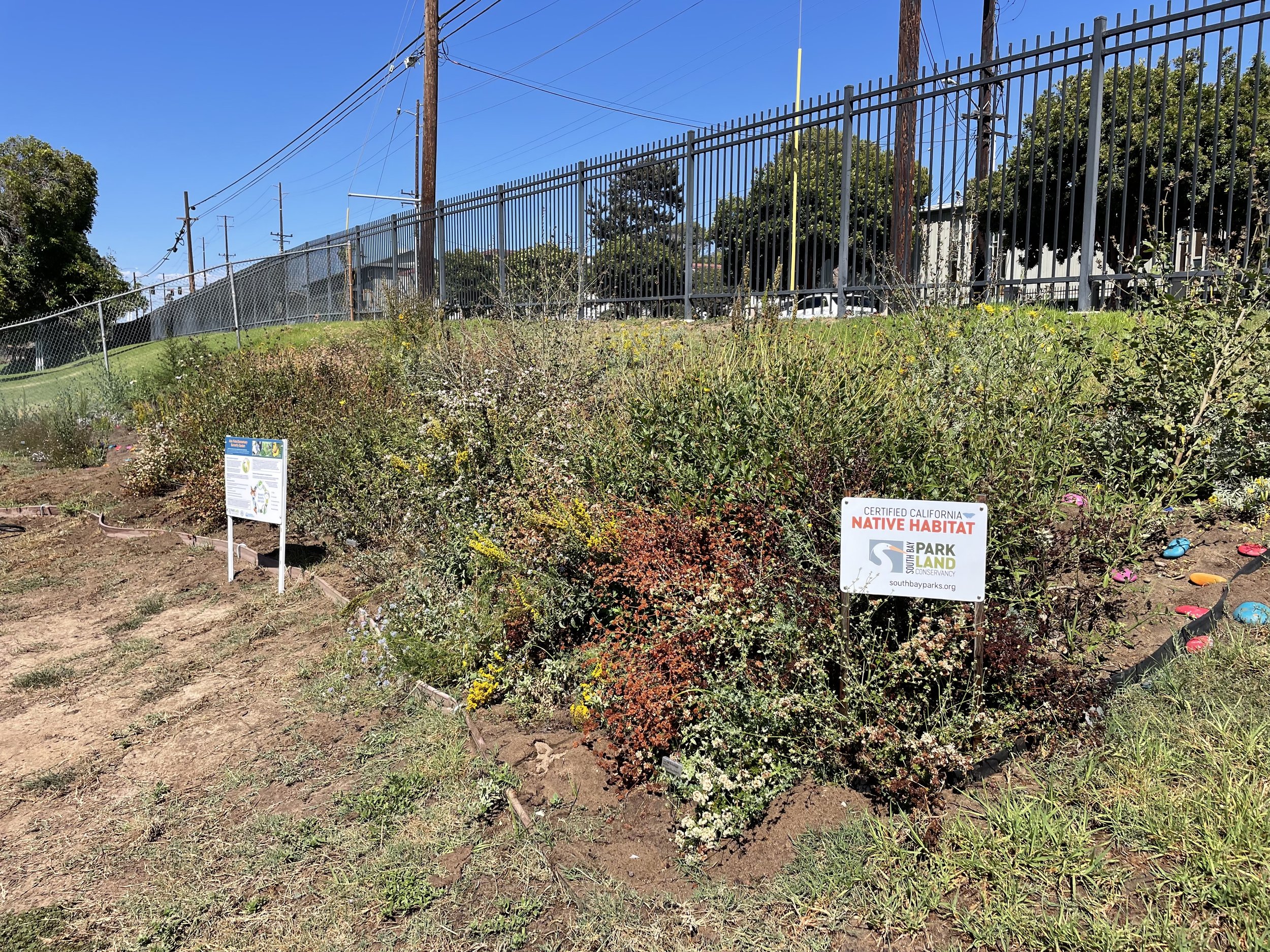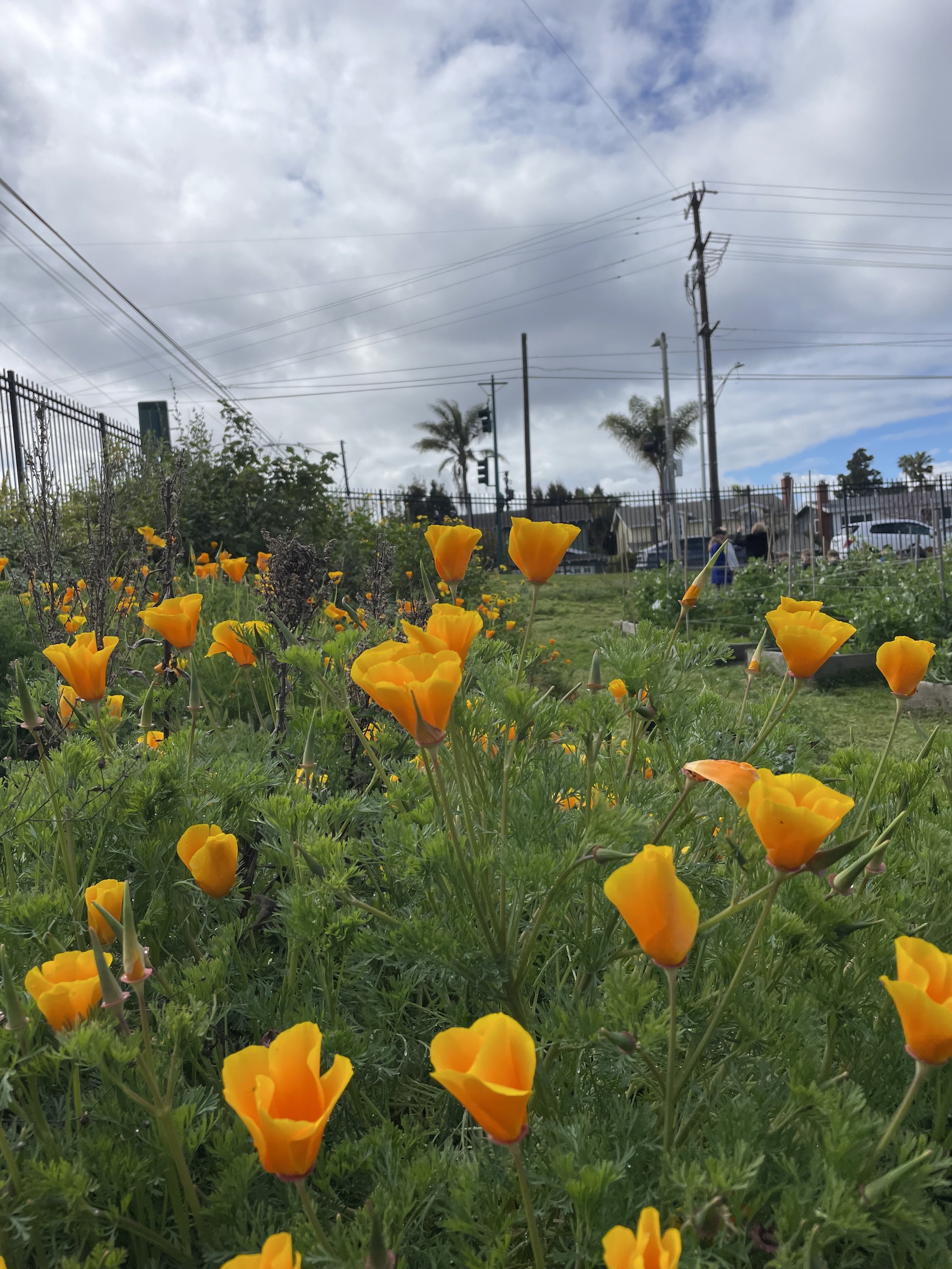Planting Natives for Pollinators
By: Aga ChenFu
In 2021, the Principal of Alta Vista mentioned she had a grant for a butterfly garden at the school. I immediately thought of South Bay Parkland Conservancy. The all-volunteer team started planning with excitement, assessing the space, scheduling a walkthrough and proposing a plant palette. Although students were back in school, Covid was still causing an impact so we didn't plant until 2022. We kept the project small (very small) with a volunteer group consisting of myself, SBPC President, Jim Light, and my daughters.
That first phase was pure heart and hard work. The four of us cleared the area, laid out the plants, dug and watered the holes and planted 90 plants - all in one afternoon after school! We finished up just as the sun was setting - clearing weeds and cleaning up. The sense of satisfaction and hard work we all felt was amazing. What was even more amazing was watching the garden grow in front of our eyes over the last two years.
There was so much I didn’t know about planting a pollinator garden.
Selecting a plant palette. I never thought about why you would select one plant over another. I learned about the need to balance the plant varieties and their dormant phases so there was always something blooming in the garden. The height of the plants was a consideration as well. Planting bigger bush-like plants closer to the fence and plants that tend to not grow as tall closer to the walkway. This also served the purpose to ensure the taller plants did not block sunlight from the shorter plants. And of course, California native plants were priority, with a focus on host plants for monarchs and the endangered El Segundo Blue butterfly.
Preparing an area for planting - I had NO CLUE what it took to prepare an area before planting! There was so much crab grass to remove so we could plant the new plants in soil. There are different ways to preparing an area for planting. For the first three phases of the garden we dug up all the weeds and grass with hand tools. - this was a long and hard process. The results were mixed in the different sections. For the last section we used a tiller which was a lot faster. In the end, it was not the method that mattered most but the care of the area after planting.
CA Native Plants - I learned about so many plants that day - common names and scientific names. I still need to work to memorize more varieties, but can now proudly identify a fuschia or seaside daisy or even an egg yolk poppy and narrow leaf milkweed. For more information on how to select CA native plants for your pollinator garden take a look at “Getting Started” with SBPC’s Native Habitat Program and these resources for native plant lists.
Pollinator Garden Maintenance - I also didn’t realize that native pollinator gardens needed care for the first 1-2 years so the plants could establish their roots. That meant weeding and watering weekly at first, then every two weeks. And sometimes for whatever reason a plant doesn’t take to the area and we had to replace it. But we also learned, when the plants like the area they grow thick and spread easily!
The goal of this pollinator garden was to get the first couple of phases in the ground and continue to make the project more interactive for students. Once we planted phase 1 in January 2022, we found a few more volunteers to help with phase 2 in early April. We paused for the summer and resumed with phase 3 in October, engaging a 5th grade classroom.
SBPC did all the prep work for the area and all the plant selection. Then we shared a presentation about pollinators and native plants. Following the presentation, we guided about five students at a time, to help plant their section. It was inspirational to witness some of the students’ first time planting a plant in a garden. Phase 4 was completed in December 2022 with Girl Scout Troop 2455.
We’re thrilled to have made an impact on the participating students and all future students who can enjoy and learn from the pollinator garden at Alta Vista.


